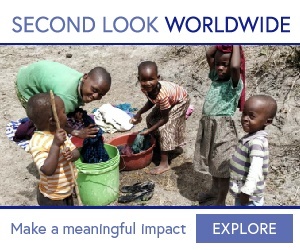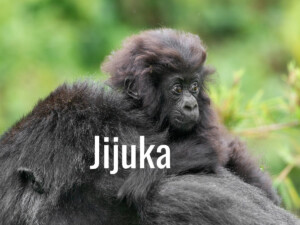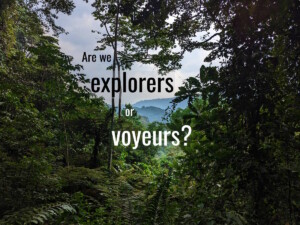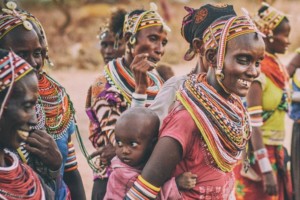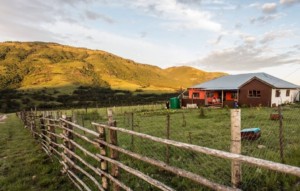How bees, trees, & tourism reduce human-wildlife conflict in Uganda
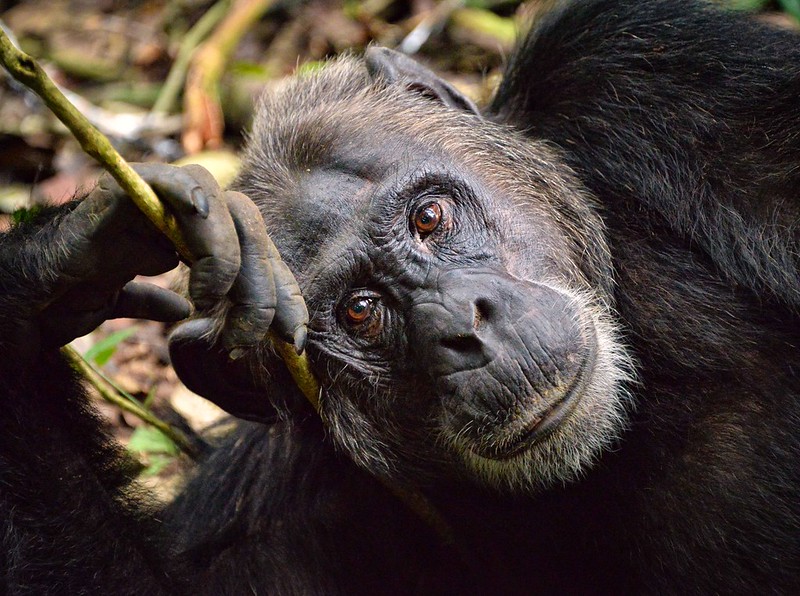
James Nadiope established the Africa Sustainable Tourism Care Foundation to address the problem of human-wildlife conflicts taking place around Kibale National Park in western Uganda. ASTCF’s first project was at Kahangi village, where community consultation led to the emergence of both traditional and modern solutions to old problems. One of those solutions was, of course, community-based tourism. Thanks to “Good Tourism” Insight Partner Second Look Worldwide for inviting James to contribute this wonderful “GT” Insight.
Kahangi village is in what is called a buffer zone or wildlife management area north of Kibale National Park near Fort Portal town in western Uganda. Because there are no fences around Ugandan parks, this area is where wildlife and humans often converge. Conflicts between them are common.
Elephants, chimpanzees, baboons, and monkeys were fairly regular visitors in the Kahangi community, lured by water, bananas, maize, and other food crops which are grown in the area by the villagers. These wildlife caused intensive crop damage and frequently attacked both humans and their cattle. This understandably made the villagers less tolerant of wildlife. They often resorted to poisoning them. There was little incentive to look after the wildlife because community members did not financially benefit from the tourism business wildlife attracts. And their means of livelihood was being undermined by that same wildlife.
At the beginning of 2014, Africa Sustainable Tourism Care Foundation starting working with the villagers of Kahangi to implement practical solutions to the challenge of human-wildlife conflict. We started by conducting a feasibility study to better understand the causes of human-wildlife conflict and its underlying effects on both the communities and the wildlife. We mobilised local communities and organised meetings with them on a number of occasions in order to get their views and involve them in decision making for solutions.
Through our feasibility study, we found that besides the human-wildlife conflict, Kahangi village also was faced with other very serious challenges including extreme poverty, malnutrition, limited educational opportunities, and disease such as HIV/AIDS and bilharzia.
Furthermore, a significant number of Kahangi households are single-parent homes whose providers have little to no marketable skills. Many of these providers are women or widows who struggle to provide not only for their own children but often for the children of extended family and friends orphaned by AIDS.
Key recommendations to reduce the human-wildlife conflict and to protect the local communities from wildlife invasion were as follows:
Make traditional beehives

Villagers who knew how were able to train their fellow villagers in the construction of traditional beehives, which are made from soft bamboo sticks and cow dung. Hung in trees on the boundaries of their gardens, the bees deter wildlife from crossing over into gardens. In addition to a security barrier, the beehives are a money earner for the community. Products such as honey, beeswax and bee venom have a market.
To date, more than 20,000 beehives have been hung around Kahangi village gardens. And the locals have been able to maintain their gardens and harvest their crops without the threat of elephant, baboon, chimpanzee, and monkey invasion.
Construct clean water sources

Many diseases, such as bilharzia, are contracted from unsanitary water. Also known as snail fever or more formally as schistosomiasis, bilharzia, which was a problem for Kahangi village, is caused by parasitic flatworms called schistosomes from water snails.
Thus it is very important for villagers to access sustainable clean and safe water for home use. So far we have constructed five water sources (spring wells) and eight pit latrines for Kahangi village and neighbouring communities.
Plant fruit trees
We encouraged local communities to promote conservation and do their bit to fight against climate change by planting indigenous and exotic fruit trees in their communities and forests. We distributed more than 25,000 tree seedlings of different species, both indigenous and exotic, including fruit trees such as avocados, guavas, and mangoes. These trees will increase forest cover in around the village and provide alternative sources of food, fire fuel, and medicines. They also decrease villagers’ reliance on the natural resources within the national park thereby increasing the conservation value of the park and reducing human-wildlife conflicts.
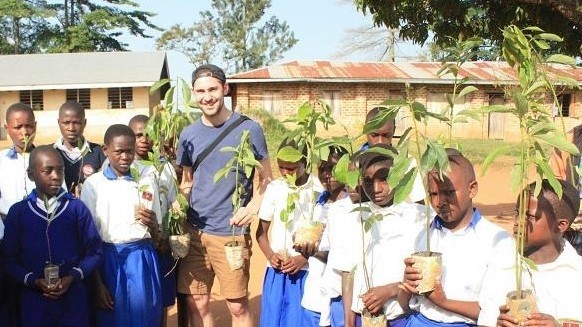
Train aspiring entrepreneurs in community-based tourism
Our aim is to help local communities around the Kibale National Park buffer zones appreciate their position as important stakeholders and beneficiaries of the tourism industry. We are changing traditional perceptions of what constitutes tourism by turning various aspects of rural cultures and livelihoods into tourist attractions in their own right and creating income-generating activities.
Our Community Tourism Entrepreneurship Training empowers people to be more aware of the value of their community assets — their culture, heritage, cuisine, and lifestyle. It motivates them to convert these into income-generating projects by offering a worthwhile experience to visitors. We give communities the capacity to document their community assets and tap the many niche or special interest tourism markets, such as eco- or nature-based tourism, cultural tourism, heritage tourism, and health and wellness tourism they may attract. We help entrepreneurs develop their community assets into appropriate, viable, and sustainable new attractions, facilities, services, and experiences to meet the needs and expectations of various tourism market segments.
One major focus is empowering women through skills training for homestead tourism, handicraft production, and rural hospitality in order to sustain village life and culture, improve livelihoods, connect villagers to global market opportunities, and reduce the need for outward migration.

After a couple of years we decided to incorporate a separate sister organisation to ensure more funds were able to get to places that needed it the most. In 2017, I founded Justice Tourism Foundation (JTF) a not-for-profit social impact travel company focusing on authentic and sustainable travel experiences. We aim to travel differently, providing socially and environmentally conscious travellers with opportunities to give back to the local communities they visit.
We understand the positive impact sustainable tourism can have in local communities and aim to use the economic clout of tourism at the grass-roots level to protect human rights and the environment. Our simple, yet effective method of reallocating funds from the tourism industry back into community initiatives, such as at Kahangi, includes improving community access to primary health care, renewable energy, and other community development services. We seek to give a voice to communities where tourism takes place in order to encourage more equitable, sustainable, and community-based tourism.
Featured image: Looking relaxed. Chimp, Kibale, Uganda by Rod Waddington (CC BY-SA 2.0) via Flickr.

About the author
James Nadiope is CEO and Founder at Africa Sustainable Tourism Care Foundation (ASTCF), a tourism NGO that promotes conservation, biodiversity, and the development of rural community-based tourism in Uganda. ASTCF empowers indigenous, rural, and marginalised communities and entrepreneurs around “tourism focal districts” in the east African nation.
James is also the Founder of Justice Tourism Foundation (JTF), a not-for-profit social impact travel company focusing on authentic and sustainable travel experiences.
Thanks to “Good Tourism” Insight Partner Second Look Worldwide for inviting James to contribute this “GT” Insight.


